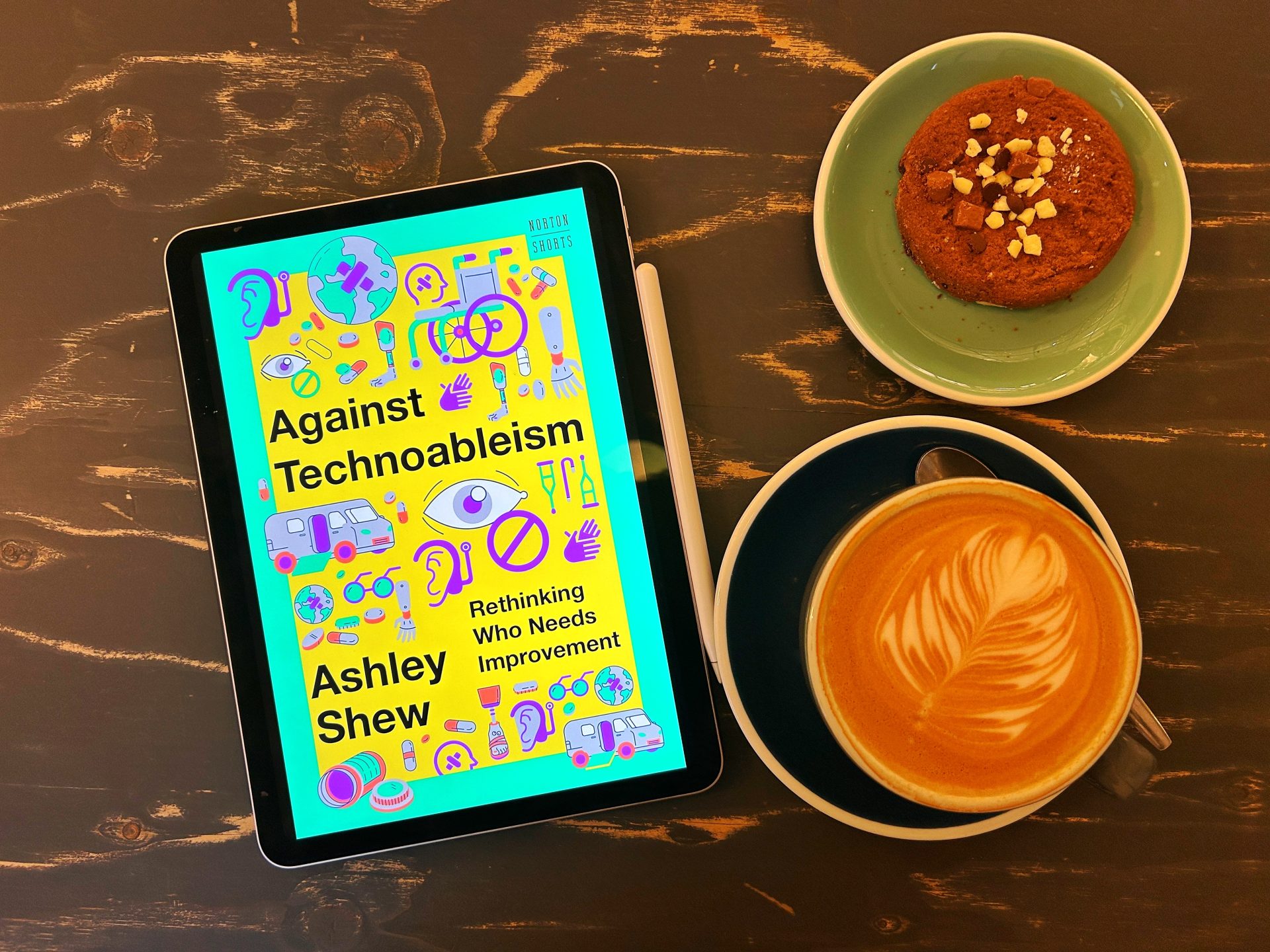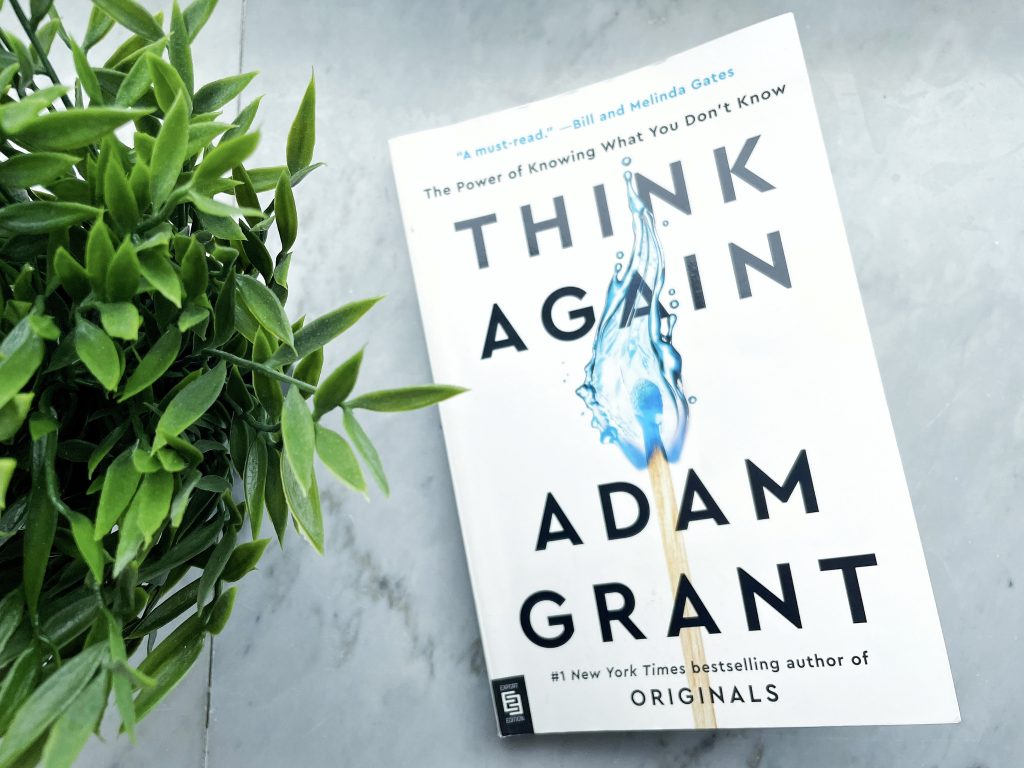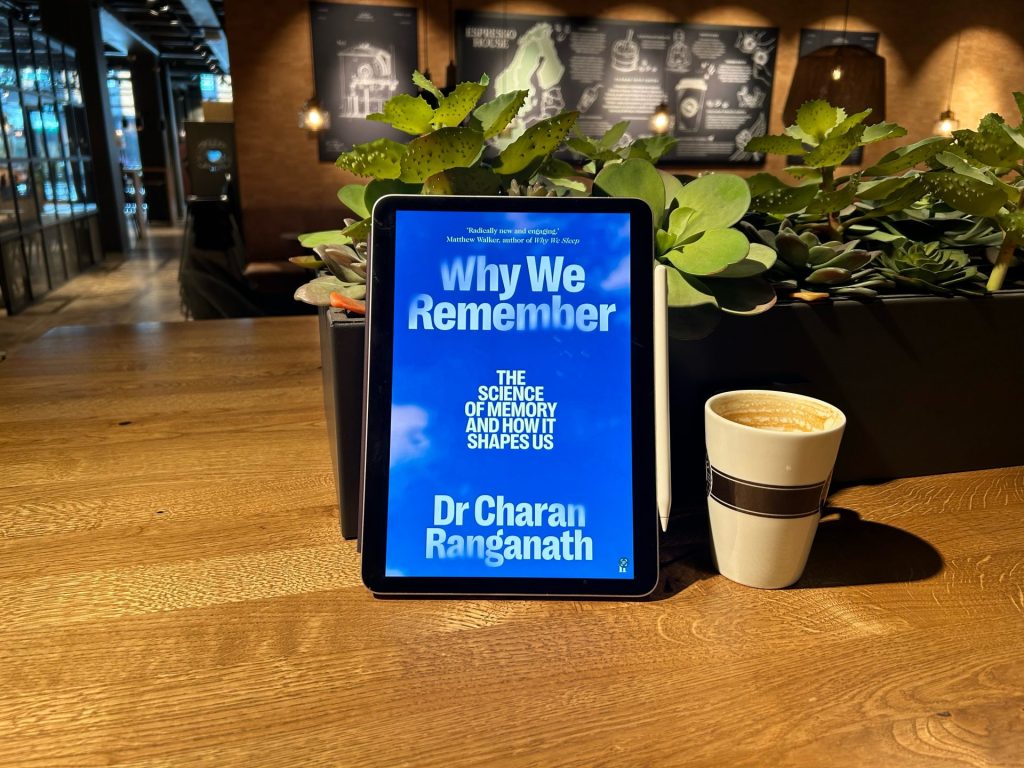Whenever I travel abroad, I find myself paying close attention to public facilities: how easy it is to locate elevators, how accessible public transportation is, or whether there are inclusive seating options. To me, a city or country’s inclusivity speaks volumes, often leaving a deeper impression than its natural beauty or tourist attractions.
I’ve also never been comfortable with the term “normal.” What does “normal” even mean? Society’s definition often feels unfair and exclusionary. In truth, aren’t we all normal in our own ways?
These thoughts and perspectives made Against Technoableism by Ashley Shew a deeply resonant read for me. The book highlights the stories that disabled people live every day—stories that often go unnoticed or unacknowledged by those of us who are nondisabled. It challenges the idea that technology is always the “solution” to the “problem” of disability and invites us to think differently about what it means to create a truly inclusive world.
I couldn’t help but think of Ludmila N. Praslova’s words in The Canary Code: “We humans are rarely good at noticing issues that don’t directly affect us.” It hit me how often we overlook inclusive public facilities because we assume only a small number of people need them. In Against Technoableism, Ashley Shew shares an eye-opening reality: over 15% of the world’s population lives with some form of disability, whether it’s psychiatric, cognitive, sensory, physical, or related to learning. That’s a lot of people. And when you think about it, aging itself often brings disabilities. It’s not something “other people” deal with. It’s something we’ll all face eventually.
I believe (and hopefully, others will too) that realizing this can shift people’s perspectives. Ignoring the need for inclusivity isn’t just about overlooking others; it’s about neglecting our future selves. Building a world that works for everyone isn’t just the right thing to do, it’s the smart thing to do.
This is a reminder that just because something doesn’t affect us directly, it doesn’t mean we should ignore it or take it for granted. It’s time to rethink how we approach accessibility, inclusion, and the value of every individual’s experiences.
Summary
Rethinking Disability
A Social Perspective Disability is often seen as an individual issue, something inherent to the person affected. But this perspective misses the bigger picture: disability is largely a social construct—a mismatch between individuals and a world designed for so-called “normative” bodies and minds. This isn’t a personal flaw but a systemic issue rooted in how society is structured.
A Made-Up Category with Real Consequences
While “disability” is a label created by humans, its effects are profoundly real. The term lumps together vastly different experiences, from an amputee to a person with dyslexia, a blind individual, or someone with bipolar disorder. Why do such diverse conditions fall under the same category? The answer lies not in biology but in the cultural and social weight attached to the term. The consequences of this categorization extend far beyond semantics, shaping the lived experiences of millions.
The Social Model of Disability: A Paradigm Shift
The Social Model of Disability challenges the idea that the “problem” lies within disabled individuals. Instead, it highlights how societal stigmas and structural barriers create disability. It’s not the person with limited mobility who’s the problem; it’s the lack of ramps and accessible spaces. This model reframes disability as a collective societal issue rather than a personal deficit.
Disability Is the Norm, Not the Exception
Disability is far more common than many realize. Statistically speaking, it’s extremely normal—over 15% of the world’s population lives with some form of disability, whether psychiatric, learning, cognitive, sensory, or physical. As life expectancy increases, aging itself often brings disabilities, making it a universal human experience. In this sense, disability isn’t an anomaly but a natural part of being human.
The Limits of Technology as a Solution
Innovators like Hugh Herr from MIT Media Lab claim that “bad technology,” not disability, is the problem. While technological advancements can play a role in improving accessibility, focusing solely on technology oversimplifies the issue. Media narratives often frame disability as a technical challenge, sidelining the lived experiences and rich communities of disabled individuals. This approach diverts attention from the core issue: the world is built to exclude disabled people.
Flawed Research and Representation
Most disability studies fail to reflect the complexity of the topic. Research often assumes a singular disability, ignoring the intersections and variations that make up real-life experiences. As a result, the data collected lacks fidelity, perpetuating narrow and incomplete understandings of disability.
By shifting our focus from “fixing” individuals to reshaping societal structures and attitudes, we can start to build a world where disability isn’t a disadvantage but an integral part of the human experience.
Ableism, The Hidden Bias Shaping Society
Ableism—the bias or discrimination against disabled people—is more pervasive than most realize. It’s rooted in a preference for nondisabled lives and ways of being, often stigmatizing disability as a “lesser” state of existence. But ableism isn’t limited to a single form of bias; it intersects with and reinforces other prejudices, such as saneism (discrimination based on mental traits), audism (bias against deaf individuals), and fatphobia.
A Tool for Justifying Other Biases
Ableism has historically underpinned discriminatory policies, such as U.S. immigration laws that favored certain Western Europeans over others. Immigrants deemed more “intelligent,” “healthy,” or “resistant to disease” were labeled as better candidates for citizenship, creating a hierarchy of worthiness rooted in ableist and racist ideologies. Even today, many countries deny disabled people the right to immigrate or gain permanent residency, viewing them as a societal “burden.” This systemic exclusion demonstrates how deeply ableist attitudes shape global policies.
The Ableism Embedded in Language
Everyday language is steeped in ableism, often without us realizing it. Words like “idiot” and “moron,” which originated as medical terms for mental disabilities, are now widely used as insults. These casual pejoratives reflect a cultural devaluation of disability, perpetuating the stigma and reinforcing negative stereotypes.
Ableism in the Law
Ableism isn’t just a social attitude—it’s written into legal systems. Many laws explicitly or implicitly discriminate against disabled people. For example, disabled parents are at greater risk of losing custody of their children to child services, even when their parenting abilities are not in question. These legal biases reveal a systemic belief that disability inherently diminishes one’s capacity to contribute to society or family life.
A Bias That Shapes the World
Ableism is so ingrained in culture, language, and policy that it often goes unnoticed. But recognizing it is the first step toward building a society that values all lives equally, regardless of ability. By challenging ableist attitudes, language, and laws, we can start to dismantle the barriers that perpetuate discrimination and exclusion.
Technoableism, When Technology Reinforces Bias
Technoableism is a specific form of ableism, one that disabled people and their allies have observed repeatedly in society. It’s the belief that technology should strive to eliminate disability, treating it as something inherently undesirable. This perspective reinforces the bias against disabled people and prioritizes nondisabled ways of living as the “ideal.”
The Media’s Role in Technoableism
Media and entertainment frequently amplify technoableism, portraying technologies aimed at disability as tools for “fixing” or erasing it. These narratives frame disability as a problem to solve, rather than recognizing it as a valid part of human diversity. Casual conversations about assistive technologies often reflect this mindset, celebrating advancements not for their ability to empower disabled individuals but for their potential to make them “less disabled.”
Empowerment or Reinforcement of Bias?
While many technologies are developed under the guise of empowerment, technoableism subtly reasserts ableist ideals. Instead of focusing on creating an inclusive world where all abilities are valued, the emphasis shifts to “correcting” disability. This approach overlooks the systemic barriers and stigmas that disabled people face and reinforces the idea that their lives are inherently less desirable.
By recognizing the patterns of technoableism, we can shift the conversation from “fixing” disability to fostering true inclusion and accessibility, ensuring that technology empowers without devaluing diverse ways of being.
The Future Is Disabled: Embracing a Universal Reality
Disability is not an anomaly—it’s a fundamental part of the human experience. Whether on an individual, societal, planetary, or cosmic level, disability will shape the future in ways that demand attention, empathy, and systemic change.
For Individuals: Disability Is Inevitable
Anyone who lives long enough will encounter disability in some form. Aging alone guarantees this, making disability a normal, predictable stage of life. Despite this shared reality, disabled people are often pitted against one another for limited resources, services, and care. These divides obscure a simple truth: we are all part of the broader disability community, whether we acknowledge it or not.
For Humanity: Environmental Crises Are Accelerating Disability
As a species, we are already grappling with the health consequences of pollution, environmental disasters, and climate change. Environmental racism exacerbates these issues, with marginalized communities bearing the brunt of hazardous waste, polluted air, and toxic sites. The rise of environmentally induced diseases, such as cancers, asthma, and autoimmune disorders, reflects a growing intersection between human health and environmental degradation. Climate change will only intensify these challenges, reducing habitable spaces and straining public health systems.
For the Planet: Living with a Disabled World
The damage we’ve inflicted on the Earth is irreversible; we cannot simply discard polluted lands or ecosystems. Instead, we must adapt to living in a world we have “disabled” through unsustainable practices. Learning to coexist with a damaged environment is essential for our survival.
Through Natural Disasters: The Trauma of Climate Change
The worsening climate crisis will bring more extreme weather events and natural disasters, resulting in widespread trauma and new forms of disability. These changes will affect everyone, creating a future where disaster-related disabilities become increasingly common.
Through Disease: The Legacy of Emerging Illnesses
The COVID-19 pandemic has already demonstrated how new diseases contribute to long-term disability, with many facing lasting vascular, neurological, and cardiac complications. Historical precedents, like polio, show that the enduring impact of disease often lies in the disabilities they cause rather than the initial infection. As more diseases emerge, this trend will continue.
For the Cosmos: Space Travel and the Universality of Disability
Even the most optimistic visions of space exploration are not immune to disability. Space is inherently disabling for human bodies, just as much of the built environment on Earth is unsuited for disabled individuals. Discussions of “ending disability” in technofuturist circles overlook this reality. Disability is not going away—it will evolve, presenting new challenges as humanity ventures beyond Earth.
Planning for a Disabled Future
The idea of a future without disability is both unrealistic and counterproductive. Instead of striving to eliminate disability, we must work toward creating a world where disability is embraced as an integral part of human diversity. Preparing for a disabled future isn’t about fixing individuals but about building systems and societies that value and include everyone, regardless of ability.
Building an Inclusive Future: Designing for Everyone
The future is uncertain, and disability often brings this uncertainty into sharper focus. It reminds us that the idea of a predictable life, one of permanent health and safety, is nothing more than an illusion. Yet, this realization opens up opportunities for creating a more inclusive and accessible world—one where all of us can live and thrive.
Designing for Access and Inclusion
To ensure “we all make it,” we must invest in accessible infrastructure, robust care networks, and programs that prioritize collective well-being. Instead of retrofitting systems to include disabled individuals later, why not design everything to be as inclusive as possible from the start? Inclusive design doesn’t just benefit disabled people—it benefits everyone by creating a world that is more adaptable and accommodating.
Lessons from Disability Justice
The philosophy of disability justice, championed by groups like Sins Invalid, offers a roadmap for building a more equitable future. This collective of disabled artists and activists advocates for a world where uncertainty is met with hope and intention. Their ten principles of disability justice provide a powerful framework:
- Intersectionality
- Leadership of Those Most Affecte
- Anticapitalist Politics
- Cross-Movement Solidarity
- Recognizing Wholeness
- Sustainability
- Cross-Disability Solidarity
- Interdependenc
- Collective Access
- Collective Liberation
These principles emphasize that an inclusive, accessible future isn’t just possible—it’s necessary for an increasingly disabled world.
Embracing Creativity and Expertise
Disabled communities offer invaluable expertise and creative visions for a world that doesn’t exclude anyone. By embracing intersectional, cross-disability perspectives, we can expand our understanding of what “the right way” to live looks like. There is no “wrong stuff”—there are only diverse ways of being, all of which deserve space to exist and thrive.
Planning for a Disabled Planet
Anticipating the challenges of an increasingly disabled planet requires proactive thinking. We must not only repair the damage we’ve already done to our ecosystems but also prevent further harm. This means designing systems, policies, and environments that accommodate all forms of life—not just the ones society deems most convenient.
Inclusion is the foundation for a better future. By heeding the wisdom of disabled communities, investing in accessibility, and fostering care networks, we can create a world that is truly hospitable to everyone.
Author: Ashley Shew
Publication date: 19 September 2023
Number of pages: 160 pages





Leave a Reply